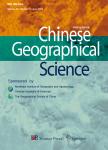Environmental Changes and Human Impacts on Landscapes near Medieval Steklyanukha-2 Fortress in Russia from Early Iron Age to Modern Times
Environmental Changes and Human Impacts on Landscapes near Medieval Steklyanukha-2 Fortress in Russia from Early Iron Age to Modern Times作者机构:Pacific Geographical InstituteFar Eastern Branch of the Russian Academy of SciencesVladivostok 690041Russia Institute of HistoryArchaeologyand Ethnography of the Peoples of the Far EastFar Eastern Branch of the Russian Academy of SciencesVladivostok 690091Russia
出 版 物:《Chinese Geographical Science》 (中国地理科学(英文版))
年 卷 期:2023年第33卷第1期
页 面:69-84页
核心收录:
学科分类:0830[工学-环境科学与工程(可授工学、理学、农学学位)] 08[工学] 0834[工学-风景园林学(可授工学、农学学位)]
基 金:Under the auspices of the Russian Science Foundation (No. 22-27-00222)
主 题:ancient agriculture mountain fortress humidity changes pollen diatoms
摘 要:The development of landscapes in one of the most populated river basins of the southern Russian Far East was studied using pollen and diatom data. The study sites were a multi-layered mountain fortress, Steklyanukha-2, and an Upper Holocene high floodplain sequence of the Steklyanukha River. Buried soil from the fluvial section acts as an environmental archive of the time in which people from the Yankovskaya archeological cultures settled in the river basin. The soil was formed under conditions of decreasing water supply in the valley and prolonged droughts. Findings of pollen Fagopyrum and Urtica signal economic activity in the Early Iron *** lake sediments accumulated from 1.6 to 0.5 kyr, when the valley was actively developed during the Middle Ages. There are signals of the development of secondary birch and oak forests. In the cultural layer of the fortress and lake sediments formed in the Middle Ages, Ambrosia and Xanthium pollens were found and are reliable evidence of agricultural activity in the valley. The pollens of plants typically seen in human-disturbed areas were also found. Indirect evidence of human activity includes non-pollen *** study of diatoms in a depression near a rampart confirmed the archaeologists assumption that it was used as a water reserve. Pollen spectra from surface soils reflect agricultural activity in the river basin since the second half of the 19th century. The largest amount of pollen of alien and synanthropic plants and weeds, as well as spores of pathogenic fungi and fire indicators, were found here.



